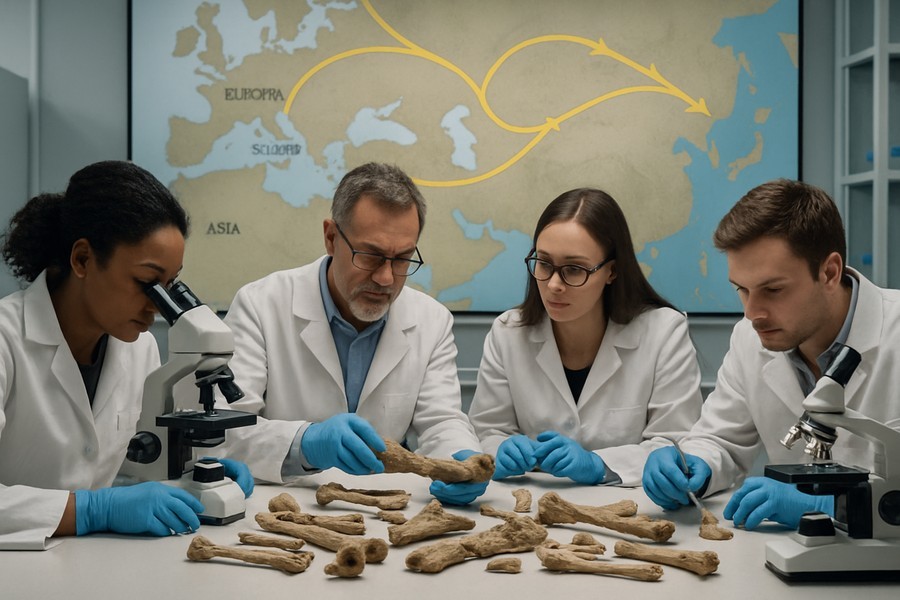
Unearthing the Journey of Neanderthals into Asia: DNA Clues from Crimea
The mystery of how Neanderthals migrated from Europe to Asia during the Middle and Upper Paleolithic eras has long puzzled scientists. This period was significant as it marked the decline of the Neanderthals and the rise of Homo sapiens. The Starosele archaeological site in the Crimean Peninsula has been of particular interest, as it is believed to be a hotbed of Middle Paleolithic Neanderthal activity. However, the lack of DNA evidence, due to poor preservation and scarcity of hominin bones, has been a stumbling block in confirming this belief.
Cracking the DNA Code
After meticulously examining over 150 bone fragments from the Starosele site, scientists have finally discovered DNA evidence of a Neanderthal individual. This breakthrough was achieved through collagen peptide mass fingerprinting, also known as Zooarchaeology by Mass Spectrometry (ZooMS). A majority of the other bone fragments at the site were too tiny to provide any significant identification. Using radiocarbon dating, the team was able to date the fragment to approximately 45,910–45,340 years ago. The findings have been documented in a renowned scientific journal.
Learning from the Leftovers
Interestingly, the study found that 93% of the bone fragments were from horses, suggesting that Neanderthals primarily hunted and consumed these animals. Bones of wolves, bison, and rhinoceroses were found in smaller quantities.
Decoding Migration Patterns
The research team also sequenced mitochondrial DNA in an attempt to uncover genetic links that could shed light on Neanderthal migration patterns. The individual, whom they dubbed "Star 1," was found to have genetic similarities with other known Neanderthal populations. Despite the relatively low coverage, the genetic placement of Star 1 is closely related to several hominins from three different sites located in the Altai region of Russian Siberia, which is approximately 3,000 km away.
These findings suggest a connection between the Neanderthals in Europe and Asia. The tools discovered at the site, which bore a striking resemblance to those found in the Altai region, further corroborate this theory.
Mapping the Migration Route
Using paleoclimate data, the team also conducted habitat suitability modeling to reconstruct potential migration paths between the Crimean Peninsula and Altai region. They identified a corridor along 55°N that would have had favorable climates around 120,000 to 100,000 years ago, or possibly around 60,000, thereby enabling Neanderthal movement and cultural exchange.
The Key Piece of the Puzzle
While the size and condition of the bone fragment pose some challenges in terms of precision, it is nonetheless considered a vital piece of evidence in understanding the lifestyle and migration patterns of Neanderthals.
In conclusion, this new DNA evidence from Crimea has brought us a step closer to piecing together the fascinating journey of Neanderthals into Asia.
